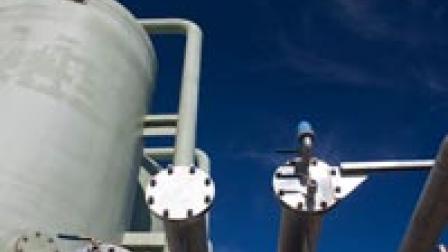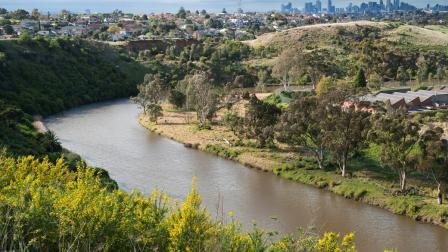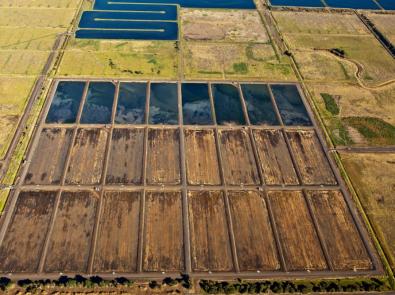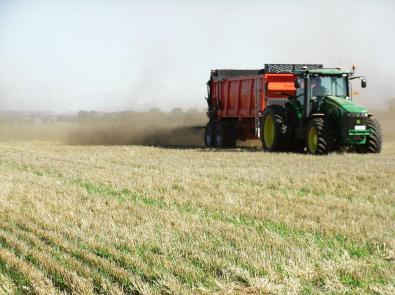Biosolids are the solid organic material left over after sewage treatment. Rich in nutrients and similar to soil once dried, they can be reused a number of ways to make the most of this resource.
We supply biosolids to local farms to spread on existing cropland as a soil conditioner, like manure or compost. The Environment Protection Authority (EPA) Victoria regulates the production, quality and use of biosolids to maximise their reuse while protecting the environment and public health.
Our biosolids land application program strictly follows the conditions set out by EPA Victoria in their Guidelines for Biosolids land application.
Producing biosolids
Our biosolids are one of the products created as a result of processing sewage at our two treatment plants, along with recycled water and biogas used to generate electricity. This process involves:
- Separating solids from wastewater in large settling tanks, where they sink to the bottom to form a layer
- Biological treatment, using bacteria to break down organic material and reduce pathogens and odours
- Naturally air-drying the solids in drying pans, then storing them on site for at least three years before they can be reused in accordance with Environment Protection Authority (EPA) guidelines
These treated biosolids look and smell like soil, and contain beneficial nutrients like nitrogen, carbon and phosphorus.
Reuse opportunities
Across Australia and around the world, biosolids have been used for many years on farmland to improve soil, as well as in compost and fertiliser. Their uses include:
- Agriculture – biosolids slowly release nutrients as plants grow, improving the soil’s ability to hold water and produce crops and replacing nutrients lost through the natural harvesting cycle.
- Composting – biosolids naturally composted with organic material like green waste can improve soil structure and water retention.
- Resource recovery – the nutrients and energy in biosolids can be recovered with the latest technology. For example, heating them releases gas that can be combusted for electricity, while the remaining ash (biochar) can be used for soil improvement or urban amenity.
Not all biosolids can be used for all purposes. This depends on the properties of the biosolids themselves, and is governed by some of the strictest guidelines in the world.
You may also like...
Western Treatment Plant sewage treatment process
The plant treats sewage using a series of large ponds, called lagoons - producing 40 billion litres of recycled water each year.

Biogas
We generate electricity by combusting biogas, captured from our sewage treatment lagoons and anaerobic digesters.

Melbourne Sewerage Strategy
This ambitious 50-year strategy sets the direction for wastewater management in Melbourne for future generations.






